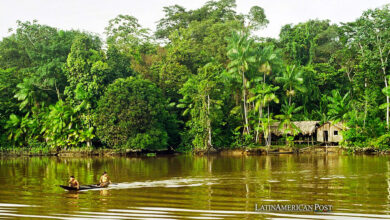Art’s role in saving Guatemala’s biodiversity


In Guatemala UN Environment has been working with the country’s National Council for Protected Areas (CONAP) on the Project ABS Guatemala -Access To and Benefit Sharing and Protection of Traditional Knowledge to Promote Biodiversity Conservation and Sustainable Use. Among its work is the use of traditional art to promote the saving of the country’s biodiversity.
For example, the indigenous inhabitants of Rabinal municipality in the department of Baja Verapaz use the common calabash tree’s fruit and the “niij,” a peanut size insect covered in a white powdery substance, to create handicrafts.
The artisans produce their handicrafts by carving out traditional symbols and depictions of the region’s animals and plants on the dried fruit of the calabash tree. Then the fruit is treated with wax made from the niij insect which gives the fruit a unique shine.
This project aims to preserve the distinctive traditional knowledge of the municipality of Rabinal and improve the livelihoods of the region’s inhabitants, besides protecting its biodiversity. To make it even more profitable the project included some innovations like producing lamps, jewelry boxes and Christmas decorations to diversify its market.
More so, the project is now working with Novica, a Central American company that sells the handicrafts online and gives the artisans fair prices for their work. To date Novica has sent over $ 73,800,125 dollars to artisans around the world.
Besides the calabash tree project, UN Environment is working together with Guatemala’s Ministry of Education and local organizations and representatives to develop a plan to train teachers and officials in the project territories to promote a better appreciation and understanding the value of their natural resources and the conservation of their traditional knowledge.
This project is one of the many being developed to safeguard the environment in the Latin American and Caribbean region which is home to about 60% of life on Earth and has a wide variety of marine and fresh water fauna and flora.
In 2016 the region made progress in achieving the Aichi targets which encompass biodiversity protection and sustainable development. The region has already made progress on 13 of the 20 targets but not any on the following six:
Integration of biodiversity values in decision making (target 2);
Sustainable management of invertebrates stocks, fish and aquatic plants (target 6);
Reduction in pollution, including from excessive nutrients (target 8);
Reduction of anthropogenic pressures on coral reefs (target 10);
Prevention of endangered species’ extinction (target 12); and
Restoration of ecosystems that provide essential services (target 14)
LatinAmerican Post | Maria Andrea Marquez




